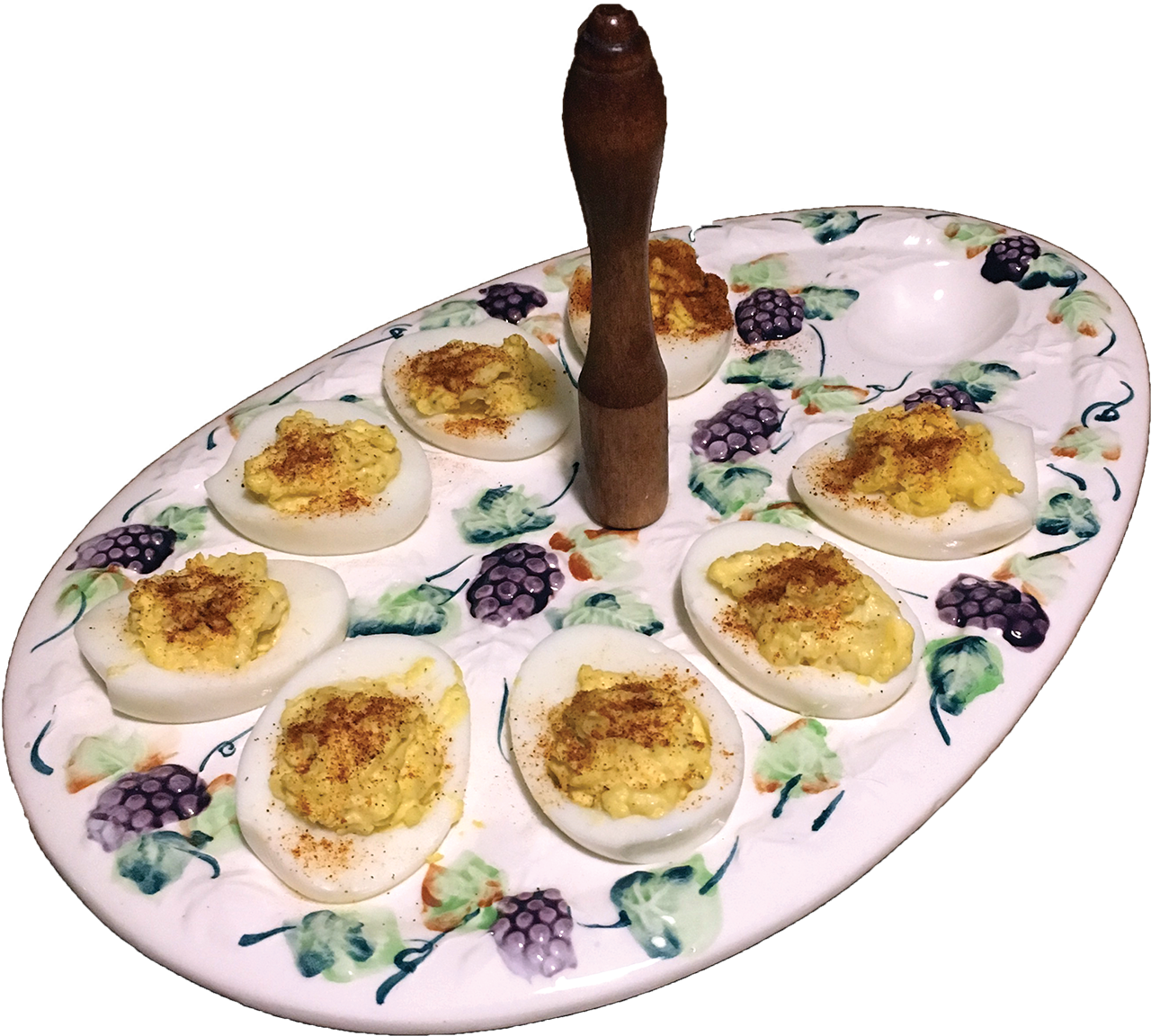Dorri Partain
Northeast News
Which came first- the deviled egg or the deviled egg plate?
The versatile egg has been boiled, sliced, diced, chopped and shredded since ancient times, but the popular “deviled egg” appears to be a 20th Century recipe. A 1913 cookbook, the New Hostess of Today, describes the method to create Eggs Deviled by slicing hard-boiled eggs, heating them with butter, tomato pulp, Worcestershire sauce, and mustard and served on toast spread with anchovy paste.
A decade later, the recipe or the name had modified to be prepared this way: cut hard-boiled eggs in half, either cross or length-wise, remove yolks and mash with vinegar and seasoning. Refill egg halves, minced ham or chicken may be added to the yolks.
Deviled egg makers of today will notice that neither of these recipes call for the common ingredients used today, namely mustard and mayonnaise. Dressings such as mayonnaise were only available in family-operated restaurants and delicatessens on the east coast. Certain recipes, such as the one used by Richard Hellman’s wife, proved so popular that New York City diners asked for portions to take home.
By 1917, Hellman closed the deli to produce his brand for consumers and make jars readily available at the corner market. Mayonnaise now appeared in all types of recipes, not just on sandwiches and salads, and became a standard ingredient in deviled eggs by the 1940s.
As for the serving plate, all shapes and sizes have been produced, from glass or ceramic. Most will hold a dozen or more deviled eggs, keeping them from moving about and easier to transport to the table. The plate pictured will only hold nine halves.




















